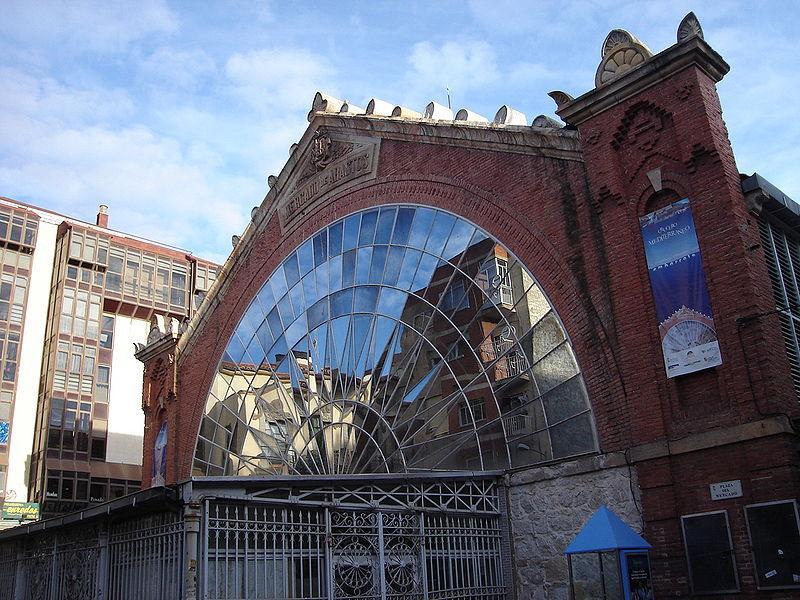Zamora, Castela e Leão, Spain
Suggest Place to Visit
3346
Track to location with GPS |
 |
Old age
Las Peñas de Santa Marta, a rock formation on the banks of the Duero on which the first settlers of the city settled.
The city was founded at the beginning of the Bronze Age, being later occupied during the Iron Age by the Celtiberian people of the Vacceans, who called it Ocalam. The initial settlement took place in the almond delimited by the Castle and the San Ildefonso coast, a strategic location as it is a rocky plateau defended by the Duero and Valderaduey rivers, in which a fort was located.
The settlement was maintained during the Roman Empire. In fact, it has often been identified with the important mansio and civitas of ´´Ocelo Durii´´ (Ojo del Duero). According to some, such population would actually correspond to the current Villalazán, twelve kilometers to the east, also on the banks of the Duero, and through which the Vía de la Plata passed.
According to other scholars, on the other hand, it would settle in the capital Zamora. Despite the fact that no significant archaeological remains corresponding to this period have appeared in the city so far (which does not rule out possible future surprises if more excavations were made, as happened recently with the prominent Muslim ceramic deposit found on the site in the that the Consultative Council of Castilla y León is being built), the toponymy would be an argument in favor of the capital of Zamora, since ´´Okelo Duri´´ originally meant prominent rock (Las Peñas de Santa Marta) and on the other hand in the Opposite bank of the river is the neighborhood of San Frontis, name of Roman origin, ´´s sub frontis pontis´´, below the bridge. It was precisely at that height of the riverbed that the Old Bridge or Olivares Bridge stood until 1310, of which there are still some visible remains. There is also a late Roman map in which the term ´´Okelo Duri´´ appears, which would correspond to Zamora. Viriato, the ´´terror romanorum´´ corresponds to this time, who celebrated his victories over the Romans (eight in total) by tearing a shred of their red banners and putting it on his lance, which is precisely the origin of the flag of the city (and the province), the ´´Seña Bermeja´´. He is considered born in Torrefrades, a town in the Sayago region, although others place his origin in Portugal (Monte Herminius, in the Sierra de la Estrella) or in the province of Huelva.
The first documentary reference that we have of the city is the minutes of the Parrochiale Suevum of the year 560, in which it is cited by the name of ´´Senimure´´, as it also appears in some minting of coins of Sisebuto in the century later. The Arabic names of the city were ´´Azemur´´ (wild olive grove) and ´´Semurah´´ (city of turquoise). The current name seems to come from one of these last two stages, and is cited as such in the Salmanticense as "one of the squares recovered by Alfonso I from the Moors".
Middle Ages
The period between the 10th and 13th centuries is the one of greatest relevance for Zamora within the Hispanic context. The Battle of Simancas (939) gave the Christians control of the Duero and Tormes valleys, turning the capital of Zamora (due to its position and its advantageous location, on top of a rocky plateau on the edge of the river) in one of the main strongholds that secured the border. However, its importance declined after the Battle of Las Navas de Tolosa (1212), which opened the south of the peninsula to the Christian kingdoms, thereby losing Zamora its strategic significance.
During the Middle Ages, Zamora was again taken and destroyed by the Muslims under the command of Emir Mohamed and later reconquered by the Christians in the reign of King Alfonso II of Asturias, el Casto, being again fortified. King Alfonso III of Asturias, the Great, repopulated it with Mozarabic Toledo in 893, surrounding it with walls and even endowing it with palaces and baths, becoming, due to its location and characteristics, the most important fortress city of the Christian kingdoms. Zamora was described by Arab chroniclers as "the capital of the kingdom of Galicia, surrounded by seven walled enclosures and large moats." It was one of the most important squares in the Kingdom of León, of which it was part. It also began the stage of greatest political, economic and architectural splendor. The gradual movement of the border towards the south, from the Duero to the Tormes, favored this progress, only broken by the Almanzor aceifas. Muhammad ibn (Spanishized Almanzor), the Victorious, launched a first attack on the city in 981, which was razed. In 986 he broke hostilities with King Bermudo II, attacking Coimbra the following year (leaving it in such a way that for seven years it was deserted) and targeting León himself in 988, destroying everything in his path. Bermudo took refuge in Zamora but nothing could contain the enemy advance. Leon, after resisting four days, was attacked, looted, burned and its walls destroyed, Zamora capitulated and Bermudo had to flee to Galicia. In 997 Zamora again suffered the action of the Muslim, because on his way to Santiago de Compostela he devastated the city again, as well as León and Astorga.
´´Zamora the well fenced´´ called it Fernando I of León and Castilla, the Great. This monarch rebuilt it in 1055, repopulated it with mountaineers and walled it up again, to later give it to his daughter Doña Urraca. Its privileged position made it the subject of dispute among the divided Christian kingdoms. During one of the sieges of the city, a remarkable event happened that was perpetuated in the Spanish ballads: the death by surprise, at the hands of the noble Zamora Vellido Dolfos, of King Sancho II when he tried to take the city governed by his sister. The possibility that the inductor had been the main beneficiary (King Alfonso VI, who had been imprisoned by Sancho II, his brother), is what, according to the chants of deed, would have caused one of the Castilian nobles present in the Siege, Rodrigo Díaz de Vivar, the Cid, made him swear not to have participated in the death of his brother (the oath of Santa Gadea -Burgos-). Both Vellido's courage and Rodrigo's audacity have become literary and even colloquial topics, as well as the bravery of the city during the siege, immortalized in the saying Zamora was not won in an hour. In the place where, according to tradition, the sovereign Sancho II was assassinated by Bellido Dolfos, there is a crude monument topped with a cross and called the Cruz del Rey Don Sancho.
Zamora is a municipality and Spanish city located in the northwest of the Iberian Peninsula, capital of the homonymous province, in the autonomous community of Castilla y León, [9] near the border with Portugal and at an altitude of 652 meters above the level of the sea.
The old part of the city has been classified as a Historic-Artistic Complex since 1973. Its main nucleus -with a very elongated layout and largely surrounded by walls- stands on a wide rocky plateau (the ´´peña tajada´ ´ of which the Old Romancero speaks) from 26 to 32 meters high, located on the edge of the Duero River, which surrounds it to the south. These characteristics earned it the nickname of ´´the well fenced´´.
In 2009 it had 66,293 inhabitants, the extension of its municipal term being 149.28 km². It is 66 km from Salamanca, 93 from Valladolid, 253 from Madrid and 55 from the Portuguese border town of Miranda do Douro.
Its set of Romanesque buildings stands out, the most important in the Iberian Peninsula and one of the most outstanding in Europe, its declaration as European Heritage being in process. This Romanesque heritage consists, in addition to the Cathedral (with a designated dome with exterior decoration of scales), other twenty-four churches, a castle, walls, a bridge, two palaces and nine houses, which is why Zamora is considered ´´the city of the Romanesque´´. Fifteen of the total of the temples are declared Asset of Cultural Interest, including some of later styles. On the other hand, it is also notable for its set of modernist buildings (nineteen in total), the only one in inland Spain together with that of Teruel. [25] Among its festivities, the celebration of Holy Week stands out, declared of International Tourist Interest.
The city is home to regional and international institutions, such as the Ethnographic Museum of Castilla y León, the Castilla y León Advisory Council and the Spanish-Portuguese cooperation organization Fundación Rei Afonso Henriques (FRAH).
It was the first city in the world with global WiFi coverage, receiving the project, called ´´Zamora Hot City´´, the ´´Nobel´´ of computing, the ´´Computerworld Honors´´, although the service left much to be desired and it eventually disappeared, leaving some 1,500 users offline.
Geography
The municipal term of Zamora has an area of 149.28 km². It is the capital of the homonymous province and belongs to the Autonomous Community of Castilla y León. It is located in the middle course of the Duero River, with a longitudinal configuration along the river, in the extensive region that forms the North Plateau, the part of the Central Plateau located at the meridion of the Central System, in the northwest of the Peninsula. Iberian.
The eastern part is on the river plain and acts as a border with the regions of Tierra del Pan and Tierra del Vino, located to the north and south respectively. The western part is where it separates from the river to the north and acts as a border with the regions of Tierra de Alba and Sayago.
The town center stands on a wide rocky plateau at an altitude of 26 to 32 meters above the river and offers a very elongated layout, mostly encircled by an old wall. Being the altitude of 652 msnm.
Flora and fauna
In the area of the municipal term there are several tree species, shrubs and riverside groves, as well as rainfed crops in the peneplain and irrigated in the river meadows; it is a very poor territory from the productive point of view. Among the tree species present in the meadows, the holm oak, gall oak, cork oak, stone pine and rebollo stand out.
The stone pine is found around the Fresneda stream, together with a dense thicket of rockrose. The holm oak is present in the peneplain of the territory, but the need for wood, firewood and pastures for livestock use has degenerated over time into hollow and degraded mountains, although the holm oak is the tree species with the most presence in the territory of the term municipal.
The gall oak has a significant presence in the peneplain and contributes to reinforcing the landscape of the meadows. The jaral, the fallow land and the dry crops, mainly cereals, complement the flora of the territory; the bushes are present on some slopes of the Duero and Esla rivers, and among its species the jaral and the holm oak stand out.
There are some areas repopulated with Aleppo pine, mainly in the Valorio forest and in the Zape stream. The existing riverside flora around the rivers, stands out the ash groves together with alders, poplars and willows. Intensive irrigated crops are grown in Las Vegas.
In the surroundings of the Duero river there is an aquatic and ornithological fauna associated with the characteristics of the river, and in the different meadows there are several livestock farms of animal species adapted to the environment.
Weather
Zamora has a continental Mediterranean climate, with cold winters and warm summers. The rains are mainly concentrated in two seasons of the year, spring and autumn, with a marked summer drought. As a meteorological phenomenon, the abundant fogs during winter are significant, caused by the presence of such an important body of water as the Duero, which can be persistent for days and considerably lower the average temperature.
tourism
Zamora is considered by three out of every four tourists who visit it as a city in transit, a complement to other destinations, and in fact almost half of them do not spend the night in the city. Most of the tourism is of a cultural nature, the peak periods being Easter and summer, while the period from December to February is the lowest. The greatest arrival of visitors occurs on weekends. 8 out of 10 tourists are nationals, assuming 26.5% of the total from Madrid, followed by Basques and Catalans. Most of the foreigners are Central Europeans and Portuguese. The average stay is two full days and one night, with an average expense that does not exceed € 100.
The city's hotel establishments, 34 in total, have an average of 60 beds and are 22 years old, with a global annual occupancy of 50%. They are broken down into a Parador de Turismo, four four-star hotels, three with three, four with two, eight with one, thirteen pensions and a campsite.
Architectural heritage
The period between the 10th and 13th centuries is the period of greatest political and economic splendor in Zamora, which was also reflected in the architectural field. The XI in particular is considered the ´´s golden century´´ of the city, and the final decades of the same and the first decades of the later constitute the period of greatest importance, qualitative and quantitative, of Zamora art. The result of these historical factors is an extraordinary collection of Romanesque art, the largest in Spain and one of the most important in all of Europe.
Cathedral
The most significant building in the city is the Cathedral of Zamora, which dates from the 12th century. It is a very simple building in its forms. It has a Latin cross plan, three naves with four sections and three apses that were replaced by a Gothic chancel in the 16th century.
The dome is, with its exterior decoration of scales, the most outstanding element of the temple and a true symbol of the city. Historian José Ángel Rivera de las Heras described it as a «brilliant work without parallel in medieval architecture», who adds that it became «head of series of similar works in the Old Cathedral of Salamanca, the Collegiate Church of Toro or the chapter house of the seo of Plasencia ».
Four have been the largest altarpieces it has had. The original Romanesque was replaced by one in the Spanish-Flemish Gothic style, made by the painter Fernando Gallego and his workshop between 1490 and 1494. This in turn was sold in 1715 to the parish of the nearby town of Arcenillas. It is unknown how many tables made it up, although it is known that there were at least 35. With the confiscation, 19 went to the executor of the confiscation in the area, Manuel Ruiz-Zorrilla, two of whose descendants donated both to the Bishopric in 1925 that are exhibited in the Diocesan Museum: ´´Pentecostés´´ and ´´Noli me tangere´´.
The replacement for the Gothic altarpiece was a baroque altar by the sculptor Joaquín Benito Churriguera, short-lived, since it was damaged by the earthquake that devastated Lisbon on November 1, 1755, and as a result it was dismantled in 1758, being sold the following year thus disappearing the one that according to the data that is known constituted the masterpiece of its author. It was replaced by the current one, made of marbles and gilt bronze, designed in the neoclassical style by Ventura Rodríguez.
Already before the tables of the main altar, the cathedral had commissioned Gallego another altarpiece for the chapel of San Ildefonso at the end of the 1470s (this one preserved in situ) and which is considered to be the earliest work of all that are preserved from the painter.
The choir should also be highlighted, which was built between 1512 and 1516 by Juan de Bruxelles.
On one side of the cathedral is the Diocesan Museum, which features an extraordinary collection of Franco-Flemish tapestries from the 15th to 17th centuries, the most outstanding being those from the series dedicated to the Trojan War.
Romanesque churches
In the city, in addition to the cathedral, there are a total of 22 Romanesque churches, from the 11th to the 13th centuries, among which the following stand out:
Churches located in the Old Town
Church of San Pedro and San Ildefonso. This Archpriest Church is the largest and most important temple in the city after the Cathedral. It has been a National Monument since 1974. Inside the remains of San Atilano, patron of the city and of San Ildefonso de Toledo, are guarded. Its western portal is the work of the architect Joaquín Benito Churriguera.
Capital of the Church of San Claudio de Olivares.
Church of San Claudio de Olivares. In the year 1157 a cession of Alfonso VII appears, implying that it is the oldest Romanesque church in Zamora. Although its proportions are small, it has a great architectural relief, since it is one of the Romanesque variants that the city offers. National Monument since 1931, its capitals are especially remarkable.
Church of Santiago de los Caballeros. It is closely linked to the historical past of the city. In it he was knighted by King Fernando I Rodrigo Díaz de Vivar, the Cid Campeador, being his godmother Doña Urraca.
Church of San Isidoro. Romanesque in style, it was built in the 12th century within the first walled enclosure. It is near the Portillo de la Traición. Construction that stands out for the uniqueness of having preserved its interior practically in an original way. It is also magnificently preserved, despite being located in one of the highest areas of the city and therefore being more exposed to wind erosion.
Church of La Magdalena. National Monument since 1910. Romanesque, built in the 12th and 13th centuries. In addition to its beautiful façade, there is a sepulcher from the end of the Romanesque oriental style, in which a reclining lady is represented with two angels that carry his soul, along with reliefs of animals and mythological beings. with two angels who carry her soul.
Church of San Cipriano. Frequently used as a concert hall, especially at the Pórtico de Zamora International Music Festival. The construction of this Romanesque church dates from the 11th and 12th centuries. It underwent many modifications and from its first construction only the head and the north wall remain.
Church of Santa Lucia. Located in the neighborhood that in medieval times was called ´´la Puebla del Valle´´, it has been used since 1989 as a visitable warehouse for the Provincial Museum of Zamora.
Church of San Andrés. Romanesque in origin, although it was rebuilt between 1550 and 1570 on behalf of Antonio de Sotelo Cisneros, one of the captains of Hernán Cortés in the conquest of Mexico. From the original factory, it preserves part of the north facade and the tower (topped).
Apse of Santa María la Nueva.
Church of San Esteban. It dates from the 12th century, although its interior was renovated in the 18th century. Desacralized, until 2009 it was the provisional headquarters of the Baltasar Lobo Museum, the latter currently being transferred to the city's castle and the House of the Giants. [79]
Church of Santa María la Nueva. It replaced the original, which was burned during the Mutiny of the Trout (1158.
Comments
We don´t have yet any comments about:
Zamora
Zamora
Be the first to leave a comment as it is very important to inform other people
Outros locais a visitar
Within a radius of 20 km from:Zamora
Zamora Cathedral |
| 3,4 Km |
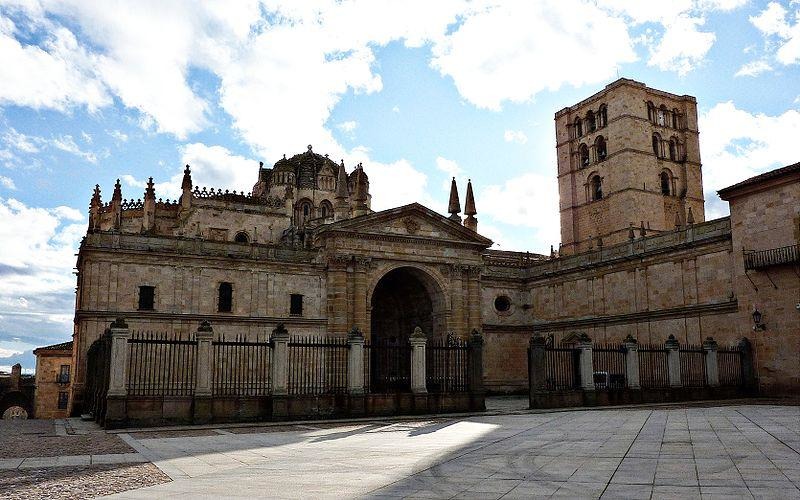 |
Stone Bridge (Zamora) |
| 3,4 Km |
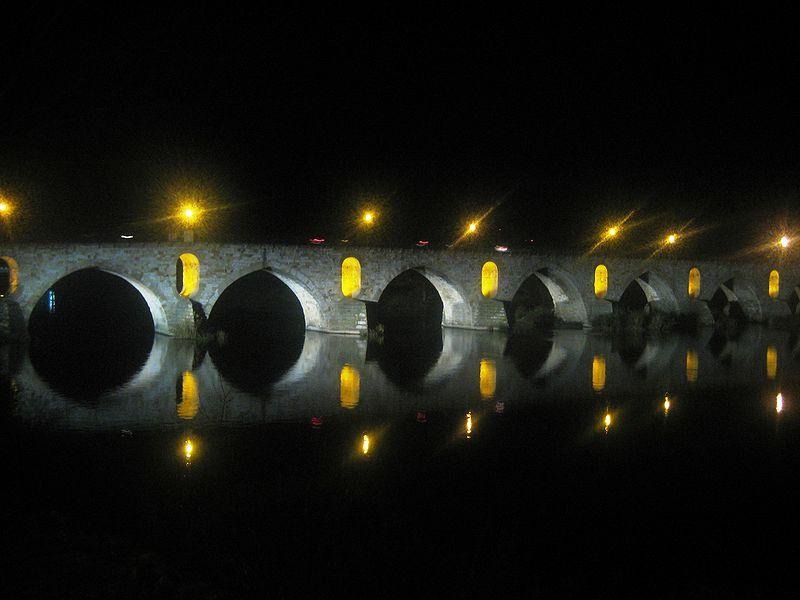 |
Castle of Zamora |
| 3,5 Km |
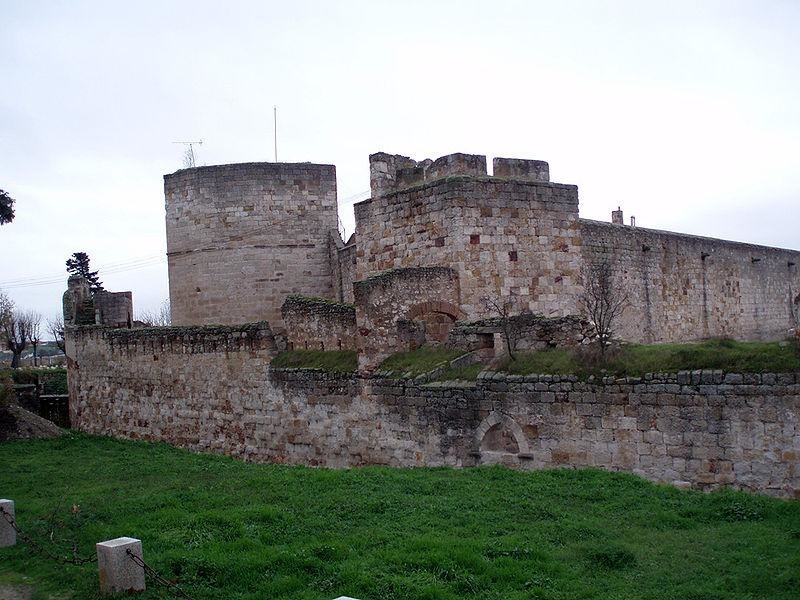 |
Church of San Pedro and San Ildefonso (Zamora) |
| 3,5 Km |
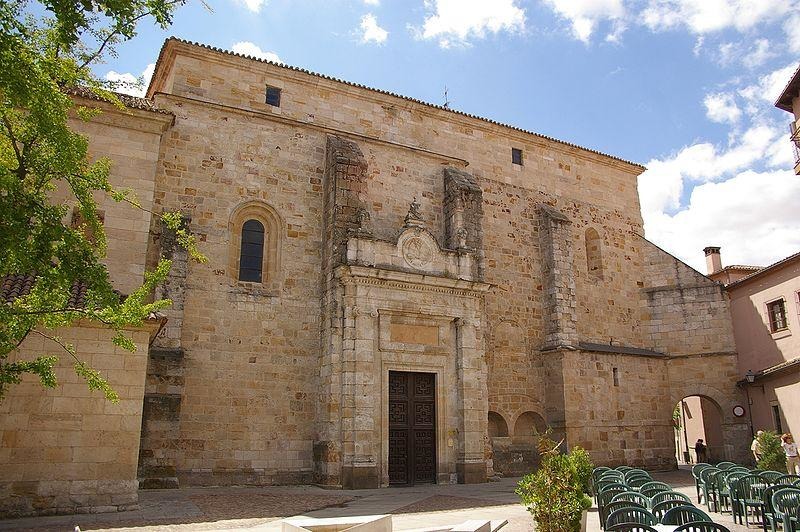 |
Palace of the Momos (Zamora) |
| 4,0 Km |
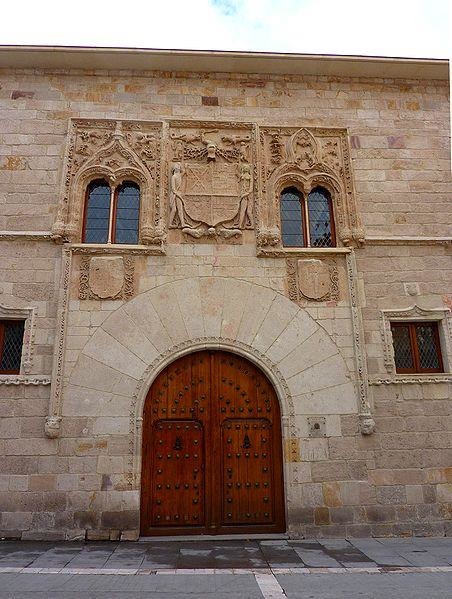 |
Hotel reservation near Zamora within a radius of 20 km
Why to book with TOURISTIC ROUTES
The best prices
Our partnerships with the world´s largest operators offer research on the best market prices.
More options
At Rotas Turisticos you can book the hotel, buy the air ticket, book the transfer from the airport to the hotel and vice versa, book the local excursions, rent the car, take travel insurance and consult the places to visit and where to go.
Holiday Tips & Destinations
Hundreds of holiday destinations with all the options that allow you to easily choose the destination that best suits your dream vacation.
TOURISTIC ROUTES
Links


